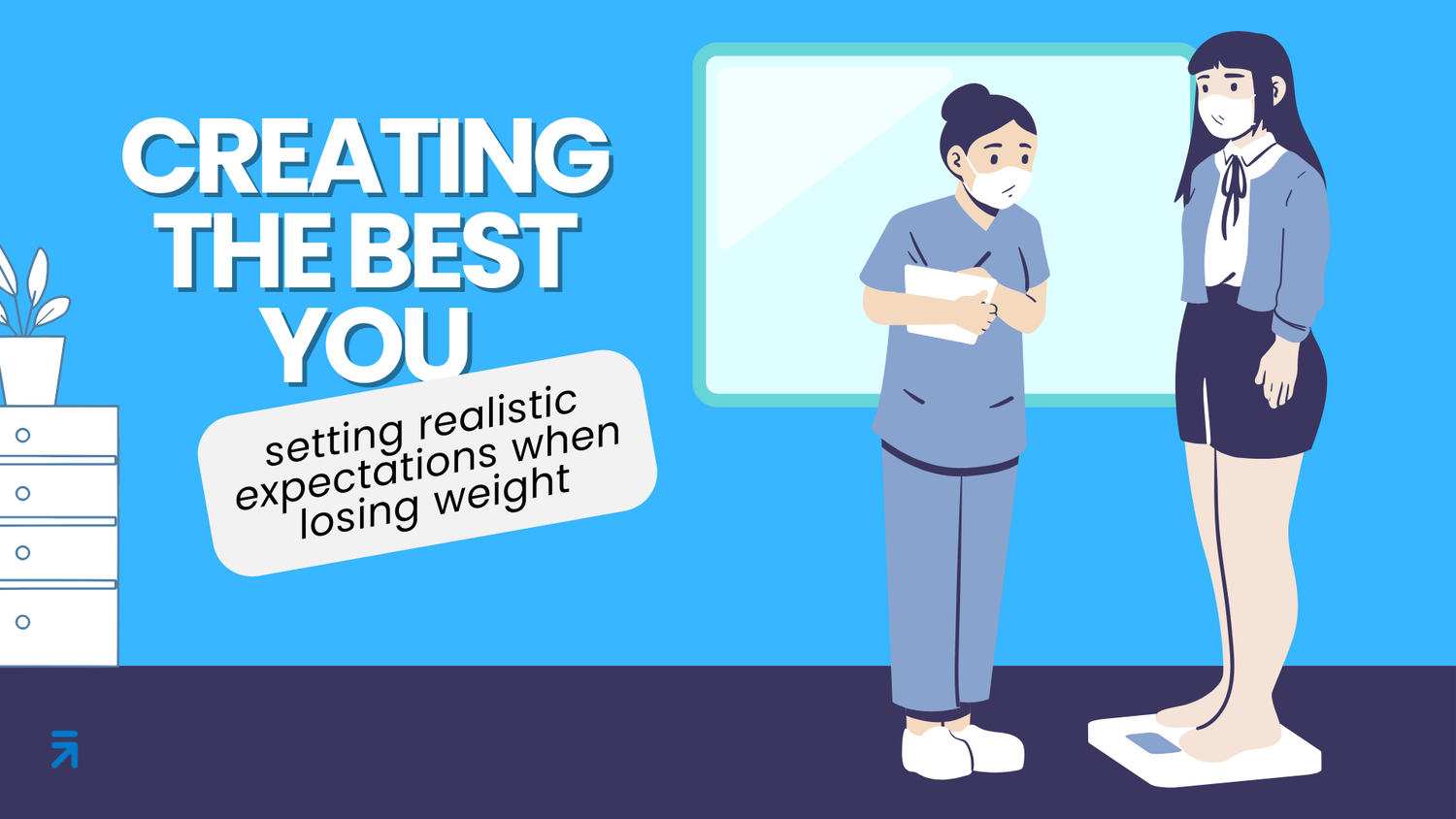Empowering the Elderly: How Smart Scales Can Help Fight Against Malnutrition for Seniors

Stay tuned to our latest news
Malnutrition is a pressing issue that disproportionately affects the elderly population. As we age, our bodies undergo various changes that can make it challenging to maintain a healthy weight and nutritional status. From decreased appetite and impaired senses of taste and smell to mobility issues and cognitive decline, the elderly face a multitude of factors that increase their risk of malnutrition.
However, there is a technological solution that can help combat this growing problem - smart scales. These innovative devices go beyond simply measuring weight and offer a range of features tailored to the unique needs of older adults.
Smart scales offer a user-friendly and accessible way for seniors to monitor their weight and overall health. With features like Bluetooth connectivity, mobile app integration, and personalized nutritional guidance, these scales provide a comprehensive approach to managing malnutrition. By tracking weight fluctuations, identifying potential issues, and offering tailored dietary recommendations, smart scales can help the elderly maintain a healthy weight and ensure they are getting the necessary nutrients to thrive.
So, let’s delve deeper into the innovative power of smart scales and how they can empower the elderly to take control of their nutritional well-being, ultimately paving the way for a healthier and more independent aging process.
Why Is Malnutrition a Big Concern Among the Elderly Population?

Malnutrition is a significant concern among the elderly population due to its impact on their overall health and well-being. After all, as mentioned before, when people age, their bodies undergo various physiological changes that affect their nutritional needs and digestion, making them more vulnerable to malnutrition. This can manifest in the form of undernutrition, where individuals do not receive adequate nutrients, or overnutrition, characterized by excess intake of certain nutrients and deficiencies in others.
Malnutrition in the elderly is associated with a range of adverse outcomes, including weakened immune function, increased risk of fractures and falls, impaired cognitive function, and delayed wound healing. Additionally, it can exacerbate existing chronic conditions and heighten the risk of developing new ones. Given the aging global population, addressing malnutrition is crucial to promoting healthy aging and enhancing the quality of life among older adults.
How Prevalent is Malnutrition Among Seniors?
Statistical data reveals alarming rates of malnutrition in this age group. According to a study published in the Journal of the American Geriatrics Society, approximately one in three seniors living in the community is at risk of malnutrition. Furthermore, among seniors admitted to hospitals, the prevalence of malnutrition increases significantly to nearly 50%. These statistics highlight the dire situation and the urgent need for attention towards addressing malnutrition in older adults.
Several factors contribute to malnutrition in seniors. Physiological changes associated with aging, such as decreased appetite and impaired nutrient absorption, make it more difficult for seniors to meet their nutritional needs. Additionally, medication side effects, such as loss of appetite or changes in taste perception, further exacerbate the issue. Social isolation is another critical factor, as seniors who live alone or lack social interaction are more likely to experience malnutrition due to limited access to nutritious meals.
Recognizing the symptoms and risk factors associated with malnutrition in seniors is crucial. Common symptoms include unintentional weight loss, decreased muscle mass, fatigue, and mental decline. Risk factors include limited mobility, chronic diseases, cognitive impairment, and financial constraints.
What Is the Impact of Malnutrition on the Overall Health of Seniors?
Malnutrition can have a significant impact on the overall health of seniors, affecting their physical and cognitive function, immune system, and increasing their risk of chronic diseases.
One of the primary effects of malnutrition on seniors is the decline in physical function. Lack of proper nutrition leads to reduced muscle mass and strength, making simple tasks such as walking or lifting objects more challenging. This can result in decreased mobility and independence.
Furthermore, malnutrition can also impair cognitive function in seniors. The brain relies on a steady supply of nutrients to function optimally. Inadequate nutrition can lead to cognitive decline, affecting memory, concentration, and overall mental acuity.
The immune system is also negatively affected by malnutrition in seniors. It weakens the immune system and leaves seniors more susceptible to infections and diseases. This increased vulnerability to infections can lead to more severe illnesses and prolonged recovery times.
Moreover, malnutrition contributes to a higher risk of chronic diseases in seniors. Studies have shown that seniors who are malnourished are at a greater risk of developing conditions such as diabetes and osteoporosis. These chronic conditions can further deteriorate the overall health and quality of life of seniors.
What Causes Malnutrition Among Seniors?
Some common factors contributing to malnutrition in older adults include decreased appetite, difficulty chewing or swallowing, limited access to nutritious food, medication side effects, and the presence of chronic health conditions.
Reduced taste and smell sensitivity, hormonal fluctuations, and a decrease in physical activity can all contribute to a diminished desire to eat. Additionally, dental problems or the use of dentures can make chewing difficult, leading to a decrease in food intake.
Swallowing difficulties, or dysphagia, can result from aging-related changes in the muscles involved in swallowing as well as from neurological conditions. This can make it challenging for seniors to consume solid foods or even liquid textures, consequently leading to reduced food intake.
Limited access to nutritious food is another prevalent cause of malnutrition in seniors. Factors such as financial constraints, lack of transportation, or living in areas with limited availability of fresh, nutritious foods can hinder seniors from obtaining well-balanced meals. Additionally, physical limitations or cognitive decline may make it difficult for seniors to shop for groceries or prepare meals independently.
Medication side effects can also impact seniors' nutrition. Certain medications can alter appetite, taste perception, or digestion, leading to a decreased interest in food or impaired nutrient absorption.
Finally, chronic health conditions often coincide with malnutrition among seniors. Conditions such as dementia, cancer, gastrointestinal disorders, or kidney disease can impact appetite, nutrient absorption, metabolism, or energy expenditure, all of which contribute to malnutrition.
Can Smart Scales Fill the Role in Monitoring Nutritional Status of the Elderly Population?

Traditional methods of assessing nutritional status can be time-consuming and invasive, making it challenging to regularly monitor elderly individuals. However, with the advancement of technology, smart scales have emerged as a potential solution for monitoring nutritional status. These scales provide a convenient and non-invasive way to gather data on weight, body composition, and other relevant factors. But can smart scales truly fill the role in monitoring the nutritional status of the elderly population? Let’s find out below.
What Are the Benefits of Using a Smart Scale for Seniors?
Using a smart scale can provide numerous benefits for seniors, especially when it comes to health monitoring and overall well-being. These technologically advanced scales enable easy tracking of weight, body composition, and other health metrics in a user-friendly manner.
One of the key advantages of smart scales is that they provide in-depth insights into overall health. Unlike traditional scales that only measure weight, smart scales can also analyze muscle mass, bone density, and hydration levels. This allows seniors to monitor not just their weight but also crucial aspects of their health, such as muscle strength, bone health, and hydration status.
Smart scales also offer additional conveniences. They can automatically synchronize data with mobile apps, making it effortless for seniors to keep track of their health information. This feature eliminates the need for manual record-keeping and ensures that data is accurately logged and easily accessible.
Moreover, smart scales often come with personalized health recommendations. Based on the collected data, these devices can provide customized advice and tips to improve overall health. This can include suggestions for exercise routines, dietary changes, or hydration goals.
Lastly, smart scales have the potential for early detection of health issues. By regularly monitoring various health metrics, seniors can notice any significant changes or imbalances and seek medical attention promptly. Early detection can lead to timely intervention and better management of health conditions.
Takeaway
Smart scales offer a promising solution to the pressing issue of malnutrition among the elderly population. As we have seen, malnutrition is a significant concern for seniors, with one in three living in the community at risk and nearly half of those admitted to hospitals being malnourished. This is due to a combination of physiological changes, medication side effects, social isolation, and chronic health conditions that make it increasingly difficult for the elderly to meet their nutritional needs.
However, smart scales provide a technological intervention that can help combat this problem. These advanced devices go beyond simply measuring weight, offering a range of features tailored to the unique needs of older adults. By tracking weight fluctuations, analyzing body composition, and providing personalized nutritional guidance, smart scales empower seniors to actively monitor and manage their health. The convenience of mobile app integration and data tracking further simplifies the process, making it easier for the elderly to stay on top of their nutritional status.
Moreover, the early detection capabilities of smart scales can be invaluable in identifying potential health issues before they become more severe. By catching any significant changes or imbalances in weight, muscle mass, or hydration levels, seniors can seek timely medical attention and implement appropriate interventions to maintain their well-being.
As the global population continues to age, addressing malnutrition in the elderly is crucial. Smart scales offer a technological solution that can play a vital role in promoting healthy aging, enhancing the quality of life, and ensuring seniors can thrive and maintain their independence. By leveraging the power of this innovative technology, we can pave the way for a future where malnutrition is no longer a pressing concern for our older adults.
Renpho Health Tips
-

Ideal Height and Weight for Different Age Groups Explained
July 11, 2024
Read more >
-

How Accurate Are Body Fat Scales? Pros and Cons to Consider
July 11, 2024
Read more >
-

Creating the Best You: Setting Realistic Expectations When Losing Weight
July 7, 2024
Read more >
-

Hold Back on the Bite: Finding Balance in Mindful Eating
June 24, 2024
Read more >
-

Prioritizing Pregnancy Safety: Is a Smart Scale the Wise Choice?
June 20, 2024
Read more >




